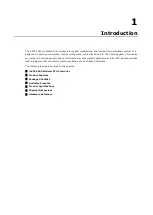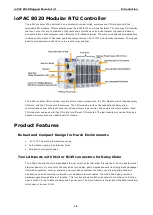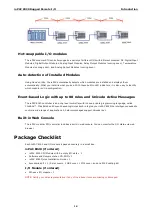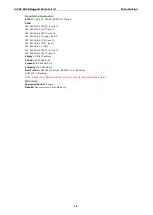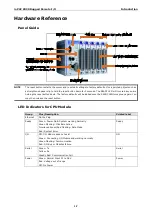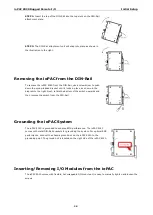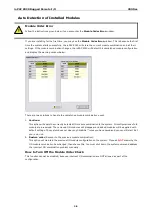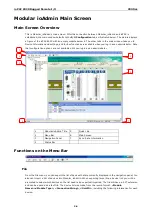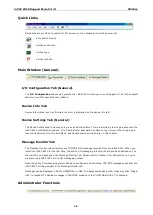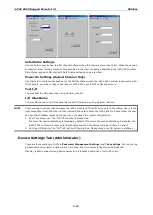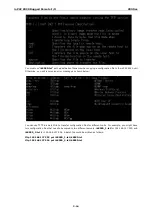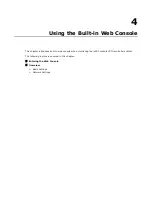
ioPAC 8020 Rugged Remote I/O
Utilities
3-2
Introduction to Modular_ioAdmin
The ioPAC system may be managed and configured over the Ethernet with Modular_ioAdmin, a Windows utility
provided with your ioPAC 8020. Modular_ioAdmin’s graphical user interface gives you easy access to all status
information and settings. Although ioPAC 8020 also supports configuration by web console, full configuration
and management is only available through Modular_ioAdmin. Modular_ioAdmin includes of following functions:
•
Complete function settings
•
Click&Go™ Logic
Features of ioAdmin
Auto search and detection
While connected to the ioPAC 8020, the utility can automatically find how many devices are connected on the
network. When you connect successfully, you will see the installed modules on the screen after you login.
You do not need to manually add I/O modules to the configuration one by one. What appears on screen is
exactly what you’ve installed. In addition, it will solve any IP conflicts when you first install two or more ioPAC
8020s to the same network at the same time.
Remote Management
Modular_ioAdmin allows users to find and configure multiple ioPAC 8020 systems over the Ethernet network,
and monitor and configure attached I/O devices. You can also test I/O devices and reset the system.
Click&Go™ Logic Editor
Click&Go™ is an event-based, front-end intelligent logic control system that makes your I/O system smarter.
Modular_ ioAdmin also includes Click&Go logic control for the configuration of your ioPAC system.
Import/Export files:
Modular_ioAdmin allows the import/export of configuration files and device management lists
Modular_ ioAdmin allows the entire configuration of the ioPAC 8020 system to be saved as a file. The file is
viewable as text and can serve as a record or backup of the configuration, or as a template. The file includes file
title, date, time, model information, and Click&Go™ rules.
Modular_ioAdmin can import and export a list of ioPAC 8020 devices that are being managed. This file can
make it easier to manage all devices on the network, and includes server name, module type, IP address, and
unit ID.

